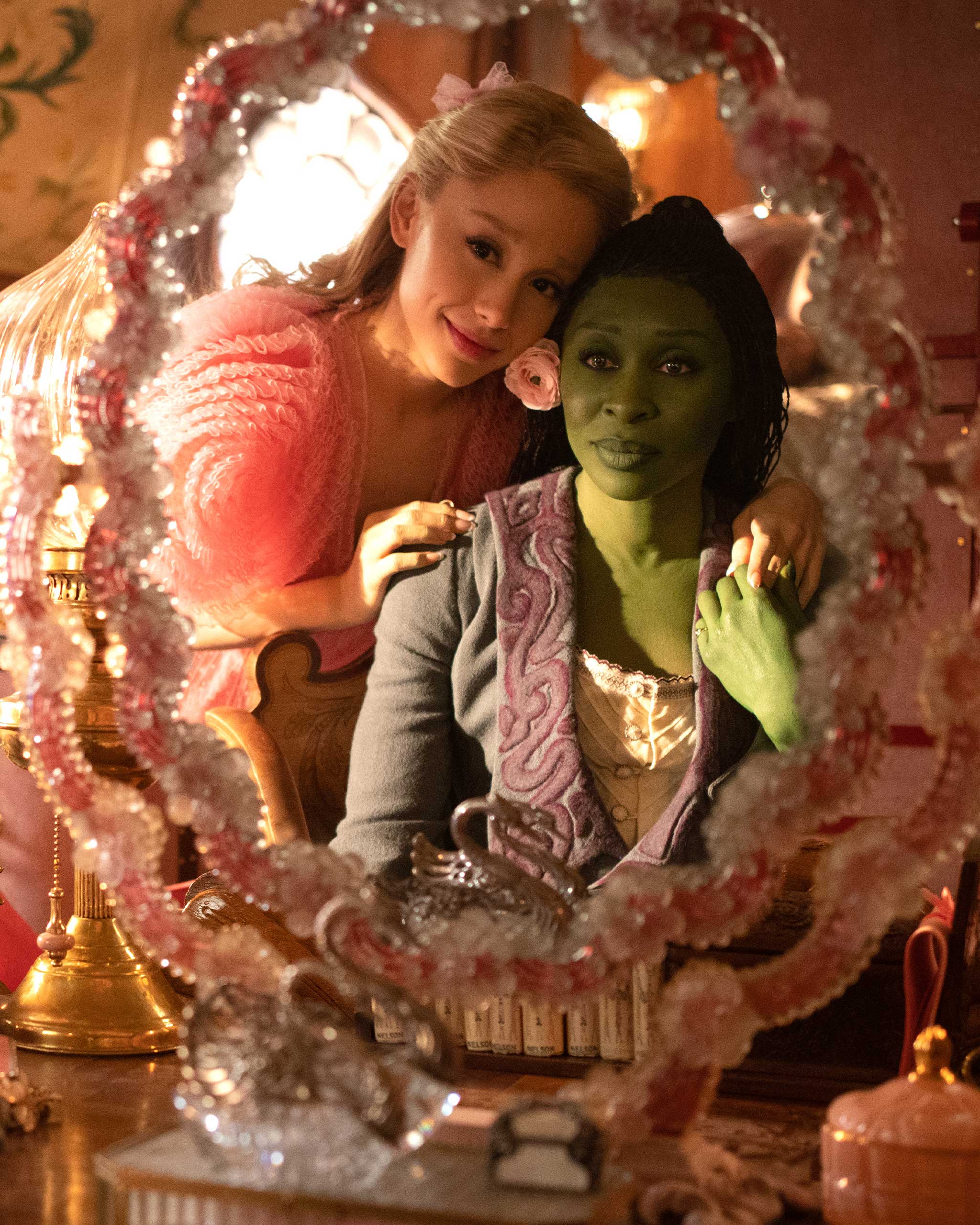Photo courtesy of Universal Philippines
How do you bring a cultural phenomenon to the big screen? For Academy Award-nominated costume designer Paul Tazewell, the magic begins in its histories.
With a crash of cymbals and a deep, ominous swelling of strings, we are transported into the world of Oz: not the Technicolor dream of the 1930s, but one reimagined in its own palette. The film opens with a flurry of movement, an ensemble dressed in an array of bright, textured garments belting the opening line: ‘She’s dead!’ In Wicked, the much-anticipated film adaptation of the Broadway sensation, costumes are more than garments; they are the heartbeat of the story.
It’s a tale told and retold for over three decades. In 1995, nearly a century after L. Frank Baum’s The Wonderful Wizard of Oz was first published, author Gregory Maguire reimagined the classic tale with Wicked, a novel exploring the untold lives of the witches of Oz set in the years before Dorothy’s arrival. The book became a “literary sensation,” and would later inspire a beloved Broadway adaptation starring Kristin Chenoweth and Idina Menzel in 2003. Wicked earned 10 Tony nominations, including Best Musical, and cemented its place as a cultural phenomenon of its time.
In 2024, the Land of Oz takes flight once more, this time on the silver screen. Following the plot of the stage show, the much-anticipated film from Universal Pictures delves into the origins of the complex, multi-layered relationship between Elphaba (Cynthia Erivo) and Glinda (Ariana Grande). Directed by Jon M. Chu, the story unfolds across two parts, with the first premiering this November and the second in November 2025.
Tasked with bringing this reimagined Oz to life is Academy Award-nominated costume designer Paul Tazewell. Fresh from his work on Steven Spielberg’s film adaptation of West Side Story and a five-time designer for productions of The Wiz, Tazewell was no stranger to the world of Oz.
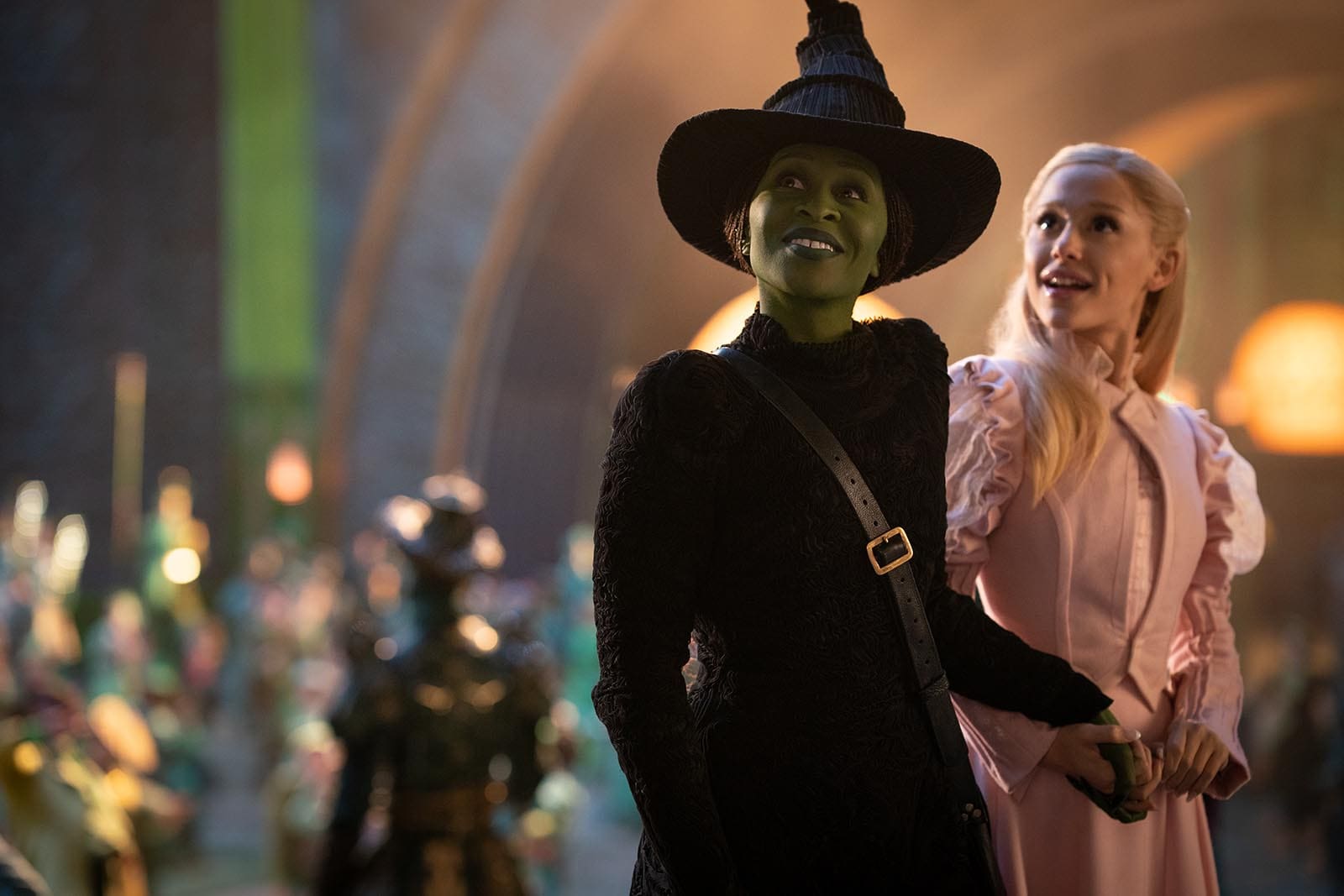
“Using costumes to tell stories and create characters is what truly excites me,” the designer says. “My role in the world of Oz is to transport the audience into another land.”
And that he does. Tazewell adds another dimension to the age-old fantasy by crafting costumes that feel tactile, almost tangible, as if you could reach out and touch them. Sculptural silhouettes, pleated chiffon, iridescent fabric, beaded patterns, and rich textures move in a seamless dance with the characters, breathing new life to Wicked in what can only be described in Oz-ian terms as “astoundifying.”
Paul Tazewell talks to Vogue Philippines about reimagining the world of Oz through costume design, his creative process, and the key details not to miss.
Vogue Philippines: The Wicked broadway has been running for over two decades now, and I’m sure it was quite the challenge to try and breathe new life into such a classic text. What preparation came in for the film and how were you inspired by Susan Hilferty’s costume design in the original stage production?
Paul Tazewell: I was taking my cues off of our director Jon Chu and also our lead producer Marc Platt’s request to re-envision what our version of Wicked might potentially be. As a designer, I’m always conscious of the audience, and Wicked, as you are alluding to, has a huge fan base. So I think that it was important to continue to engage that audience. I thought that it was best to actually start from the very beginning and go to the images that were generated out of L. Frank Baum’s original Wizard of Oz book, and then the 1930s film, and to blend that with the impression of what Susan Hilferty had brought to the musical as well as Gregory Maguire’s novel, which is the original story that we’re actually investigating or interpreting.
I pull from many different banks of information and inspiration for how I develop a look. Part of that is engaging with the spirit that was captured within the original Wicked musical, but somehow reinterpreting it in a way that feels more specific to the cast and the kind of story that Jon wanted to tell. So, you know, it was vast. [We wanted] to create a world that was very engaging for a modern audience, that felt whimsical and new, but also embraced all of those icons that we are familiar with. Of course, through my own personal design lens.
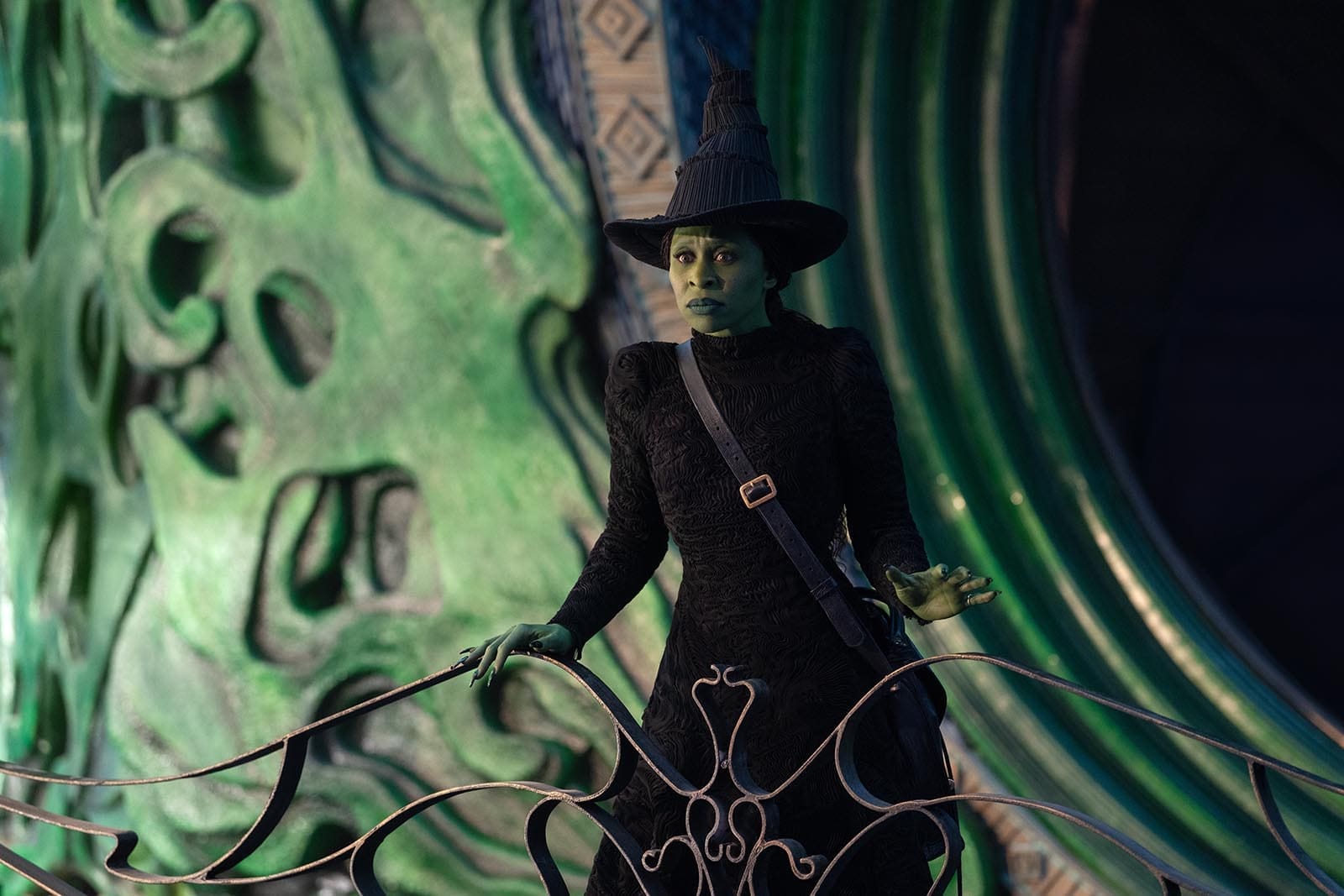
What was your favorite part of the design process and of working with Cynthia Erivo, Ariana Grande, and the rest of the cast?
It was probably the most fully gratifying experience overall. I haven’t experienced a period where I was able to explore as much as I did with this film. We were filming in the UK, which was fortunate because there is a huge community of costume makers and tailors and amazing millinery artists. We were able to collaborate with them in generating from scratch all these different looks that needed to be original to our story. There are specific points of any project that I get really drawn into. First, I love being inspired and conceptualizing what the world might be. So that’s collaborating with the director and with the other designers, like Nathan Crowley, who was our production designer, and Alice Brooks, who was our director of photography. Then, working to manifest designs and launching into how they would be fabricated, that’s really where my heart is: working and collaborating with these amazing costume makers to create something that’s a two-dimensional idea, and then open it up into a three-dimensional, realized garment.
And, as you were saying, the next draw for me is the collaboration with the performers. Engaging with how they’re envisioning what this character might look like versus what we’ve come up with, and then coming to this kind of wonderful meeting place to figure out how we indeed define who they’re going to be. With both Cynthia and Ariana, [they were] completely open and engaging with my process. They were completely involved with the fabric choices, and they had their own ideas. Being able to incorporate those into the design as well was a really wonderful process.
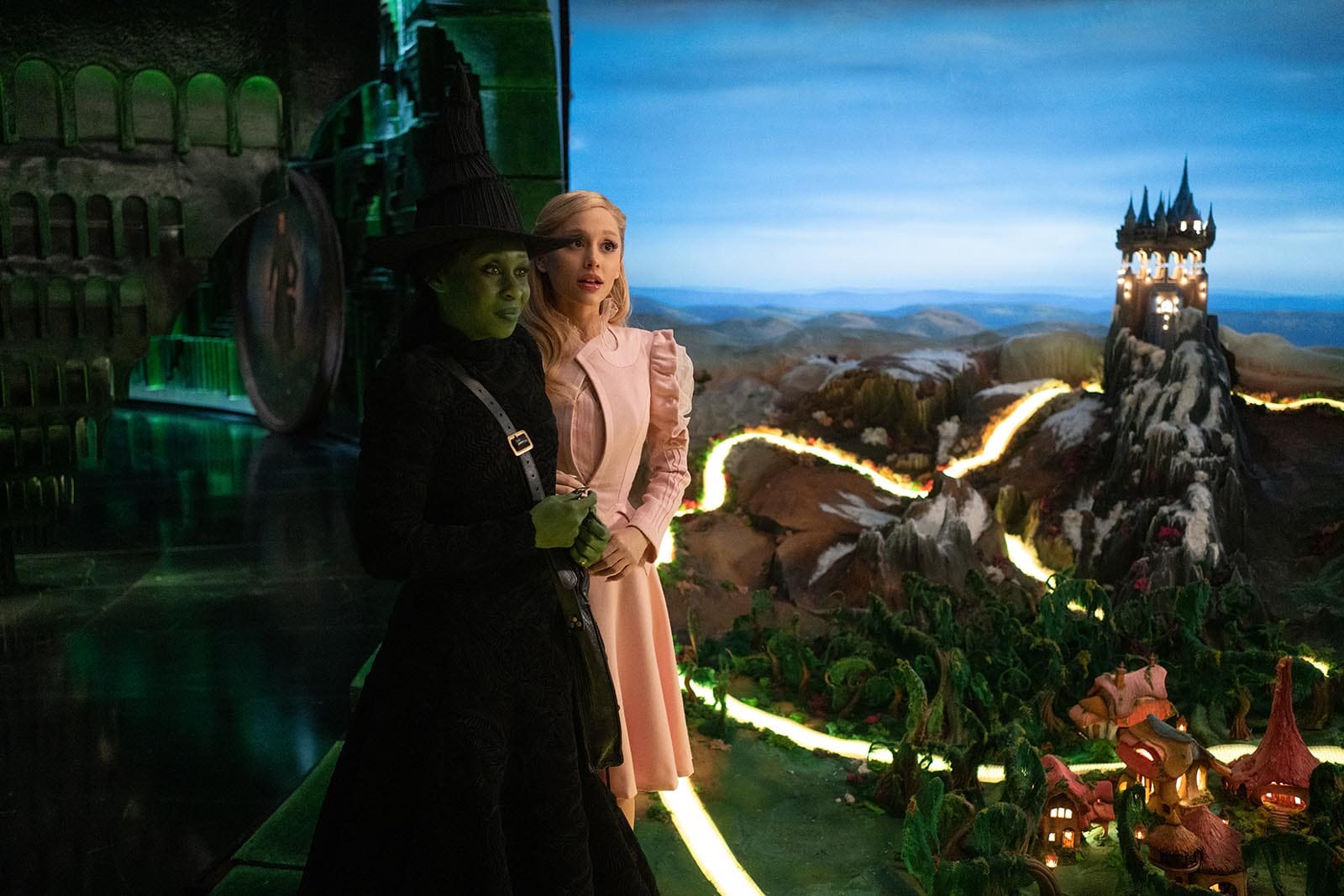
Is there a specific memory that sticks out in that process of collaborating with them, from costume designer to actor?
Oh gosh, there’s so many. When I think about the bubble dress for Ariana, that took a lot of research and development to arrive at where we ended up. I was greatly inspired by the 1930s Glinda dress when she arrives in the bubble. I wanted to re-envision what that might be for this more up-to-date telling, in a way that would be reflective of contemporary fashion and our collective idea of what a fairy princess or a good witch might look like in 2024. We were looking at what shapes we could use to evoke that bell shape in a different way, how it would be engineered, what the color was going to be, and how is it going to be trimmed, embroidered, and beaded. There was a lot that was involved in getting to that end.
With Cynthia, definitely her Emerald City dress; the undulating micro-pleats applied to the surface. It creates this kind of synergy when Cynthia moves and spins around that connects her to that inspiration of nature. There’s a quality about that dress that mirrors what Elphaba wears in the original Wicked musical, and we’ve taken a glimpse of that and interpreted it into something that has become its own thing. For every costume of both of theirs, there was a significant amount of research and development, and thankfully, we had the time to be able to go through that so that we could make the perfect version.
There’s so much intricate detail that plays into every look. Is there any specific detail that we might miss out on that you’d want us to look out for?
There are lots of little nuggets that are dropped in, but the silver and crystal slippers that we have on Nessarose are definitely an icon for us. In the Wizard of Oz (1939) movie, they were ruby slippers. The reason for that was largely because they were on the forefront of working with technicolor and reimagining their iconic slipper in something of that color. But for us, it was all about dipping back into the original idea from the bound book that it was a Silver Slipper. Then I made it into something that would be more like jewelry instead, so that it felt very precious when it’s gifted from Governor Thropp to his daughter, Nessarose. We see early on that these are shoes that belong to Mrs. Thropp, both Elphaba and Nessarose’s mother, and that is set up within how Jon has shot the film. But what I would love for audiences to notice is that the heel is actually a miniature tornado that then spirals up and envelops the foot. So there are definitely visual nuggets that are self-referential to the film that I’m hoping will inspire thought. For example, with Mrs. Thropp, her dress is based on the idea of a poppy: it’s a poppy red dress, and there’s also a poppy flower at her waist. With Mrs. Thropp’s secret lover, there’s a vest that he wears that is more connected to, I would say, American icons. So I would hope that the audience will notice these. I think that there’s more that will reveal itself into the next film, but those are some of the the nuggets that I’m hoping will resonate.
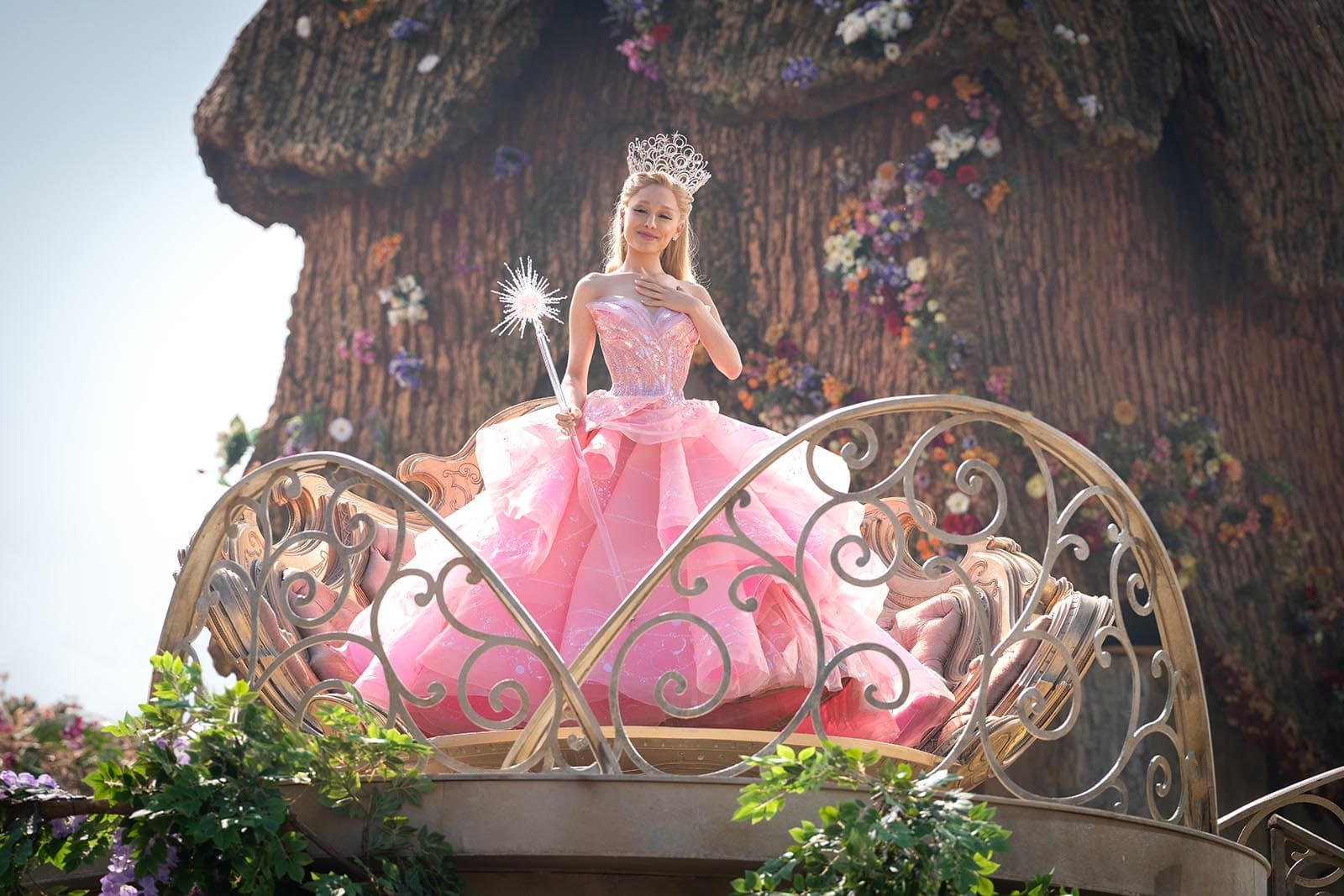
What would you say was the most challenging and the most fulfilling part about designing the costumes for Wicked?
What was most challenging was the the scope, just because we were creating a full world that is made up of different lands. You’ve got Munchkin Land, Emerald City, Kiamo Ko, the Uplanders. Keeping those worlds specific and then holding them all together as a consistent Land of Oz was really important. And with the number of bodies to dress and the number of looks to keep up with, that was challenging. But every day on set was exciting. It was challenging because of the grand scope of what we were attempting, but the process of creating all these looks was very exciting. And it’s amazing to be on the other side of it now, to have some distance. It was quite an amazing feat that I am very, very proud of.
But what was most satisfying for me was the connections that I made in the process of telling the story. When I think about the the two years of my life that I spent with Cynthia and Ariana and Jon and Michelle Yeoh and Jonathan Bailey, Jeff Goldblum, and all of our cast, all of these amazing and very talented people that I had the opportunity to dress, I mean, that’s a once in a lifetime opportunity. To have it underscored by the beauty of Wicked and all of its music, it’s this amazing adventure, this wonderful ride that we’ve created for audiences. And it’s so wonderful to be a part of.
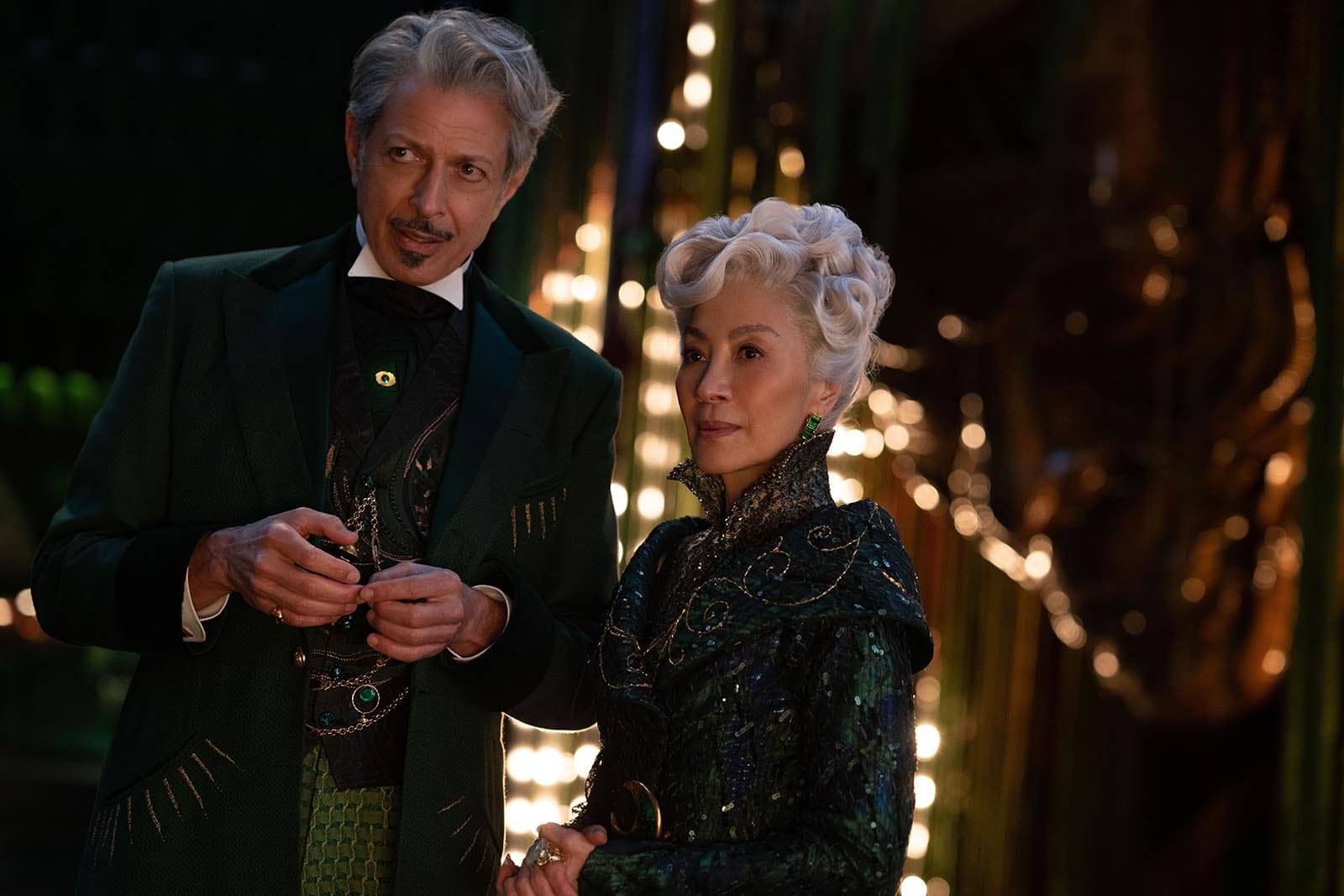
Whether they’re long-time fans or new to Wicked, what would you want viewers to take from this film?
I’m hoping that the audiences will completely get immersed in the world that we’ve created. There may be people who are very familiar with the original musical, some who have never seen the musical but who have seen the Wizard of Oz film from the 30s, and then there might be some people that have read either Gregory Maguire or Baum’s book of Wicked. So, I think that it has an appeal for all the generations that might want to engage with the story, and I think that we’ve provided something for everyone to connect with. My interest, of course, is that the audiences will come and want to wear all the clothes that we’ve represented the characters with. I just hope that we’ve created an inviting world that people want to be a part of. I hope it all speaks directly to our heart and how we relate to each other and how we embrace each other’s differences.
We’ve talked a lot about the influences and the existing texts on the world of Oz: from the books to the Broadway show, and now this film. How does the world you’ve created differ from the earlier versions of Wicked, and how is it relevant to today’s landscape?
It’s interesting when you compare it film-to-film. The 1930s Wicked is representative of a story that was created at the turn of the century. It was updated to their sensibility at that time and what they were able to do technologically as far as filmmaking goes. So that idea of going from a nostalgic black and white or sepia-toned world directly into this colorful world that was completely magical was very exciting for those audiences then. It was also exciting for me to see that as I was growing up. With Maguire’s book, he twisted the idea of that story on its head. He shifted how we see what we think is good and what we call bad or evil. And we are in a place now within our modern society where we’re asking those questions as well: Are we being given the the truth? I think we’re all grappling with that within our culture broadly.
This film speaks directly to that as far as how we’re representing the story of Elphaba and Glinda. What do we call good? And when we say good, is that a positive thing, or is that a negative thing? Where does it live? And when we say someone is evil, are they truly evil, or is it how they are being presented in the media or the public eye? So I think that it opens up this question of, how do we see people? How do we see stories that are presented to us? The story of Elphaba and Glinda coming together as complete opposites, and creating a bond that makes them stronger by [giving each other] somewhat of a different point of view—I think that that is very necessary in how we tell stories. It’s a theme that, as modern people, we need to engage with and really understand, because there’s a lot of divisiveness in our current culture that needs to be questioned.
*Interview edited for clarity and brevity
Wicked will be out in Philippine cinemas on November 20, 2024.
- How Cynthia Erivo Delivered Her Most “Wow Factor” Wicked Look Yet
- Ariana Grande’s Latest Wicked Look Referenced Glinda—and Dorothy
- Thank Goodness! Here’s the Magical First Full-Length Trailer for Ariana Grande and Cynthia Erivo’s Wicked
- Michelle Yeoh Is Joining Ariana Grande, Cynthia Erivo And Jonathan Bailey In “Wicked”
